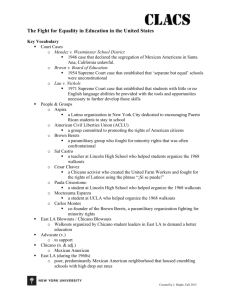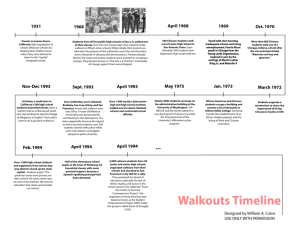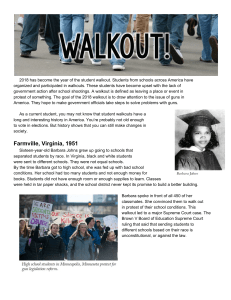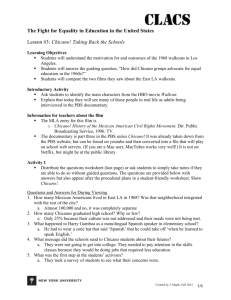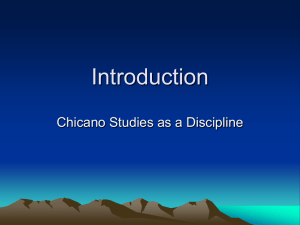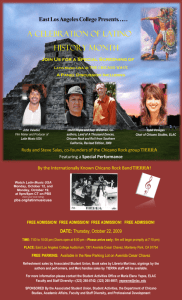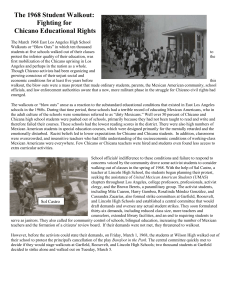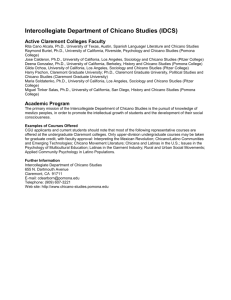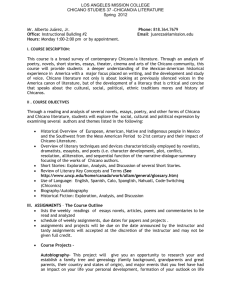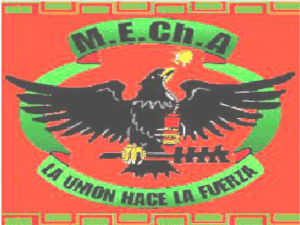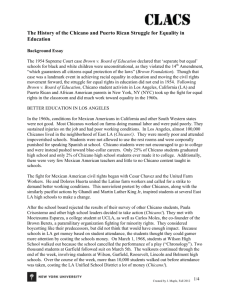The Fight for Equality in Education in the United States
advertisement
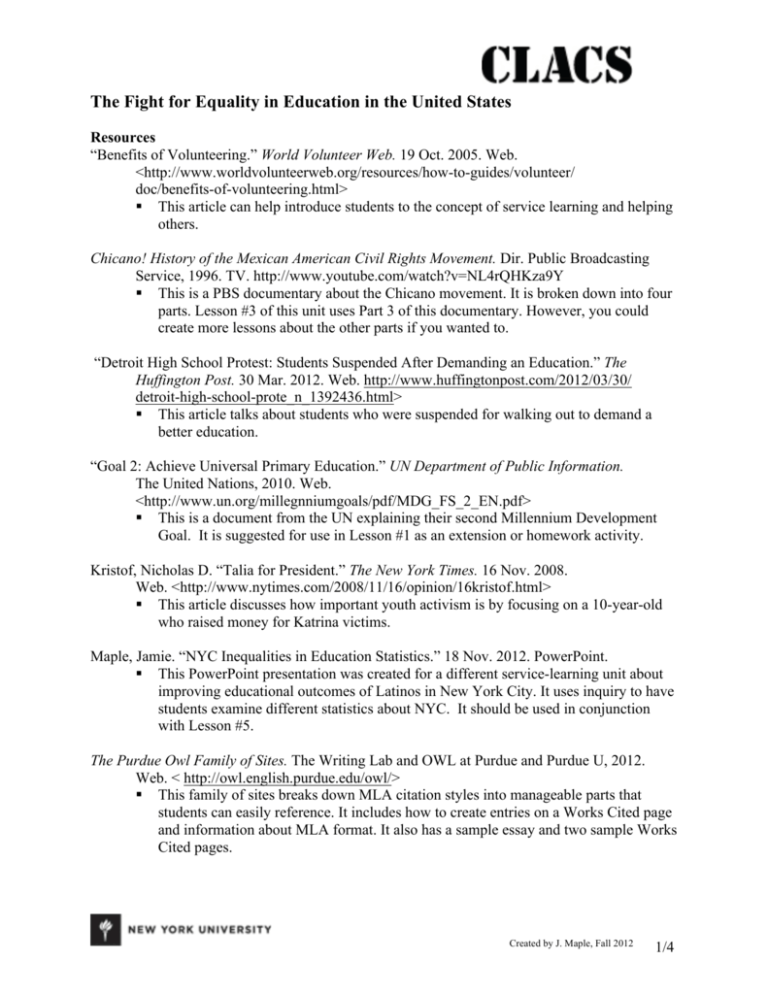
The Fight for Equality in Education in the United States Resources “Benefits of Volunteering.” World Volunteer Web. 19 Oct. 2005. Web. <http://www.worldvolunteerweb.org/resources/how-to-guides/volunteer/ doc/benefits-of-volunteering.html> § This article can help introduce students to the concept of service learning and helping others. Chicano! History of the Mexican American Civil Rights Movement. Dir. Public Broadcasting Service, 1996. TV. http://www.youtube.com/watch?v=NL4rQHKza9Y § This is a PBS documentary about the Chicano movement. It is broken down into four parts. Lesson #3 of this unit uses Part 3 of this documentary. However, you could create more lessons about the other parts if you wanted to. “Detroit High School Protest: Students Suspended After Demanding an Education.” The Huffington Post. 30 Mar. 2012. Web. http://www.huffingtonpost.com/2012/03/30/ detroit-high-school-prote_n_1392436.html> § This article talks about students who were suspended for walking out to demand a better education. “Goal 2: Achieve Universal Primary Education.” UN Department of Public Information. The United Nations, 2010. Web. <http://www.un.org/millegnniumgoals/pdf/MDG_FS_2_EN.pdf> § This is a document from the UN explaining their second Millennium Development Goal. It is suggested for use in Lesson #1 as an extension or homework activity. Kristof, Nicholas D. “Talia for President.” The New York Times. 16 Nov. 2008. Web. <http://www.nytimes.com/2008/11/16/opinion/16kristof.html> § This article discusses how important youth activism is by focusing on a 10-year-old who raised money for Katrina victims. Maple, Jamie. “NYC Inequalities in Education Statistics.” 18 Nov. 2012. PowerPoint. § This PowerPoint presentation was created for a different service-learning unit about improving educational outcomes of Latinos in New York City. It uses inquiry to have students examine different statistics about NYC. It should be used in conjunction with Lesson #5. The Purdue Owl Family of Sites. The Writing Lab and OWL at Purdue and Purdue U, 2012. Web. < http://owl.english.purdue.edu/owl/> § This family of sites breaks down MLA citation styles into manageable parts that students can easily reference. It includes how to create entries on a Works Cited page and information about MLA format. It also has a sample essay and two sample Works Cited pages. Created by J. Maple, Fall 2012 1/4 Walkout. Dir. Edward James Olmos. Perf. Alex Vega, Michael Peña, and Efren Ramirez. Home Box Office, 2006. Film. § This is an HBO film that focuses on the 1968 walkouts in East Los Angeles. It is available from Amazon.com or on DVD from Netflix. Walsh, Declan. “Taliban Gun Down Girl Who Spoke Up for Rights.” The New York Times. 9 Oct. 2012. Web. <http://www.nytimes.com/2012/10/10/ world/asia/teen-school-activistmalala-yousafzai-survives-hit-by-pakistani-taliban.html?_r=0> § This is a NY Times article about a teenage education activist who was shot by the Taliban. It is suggested for use in Lesson #1 as an extension or homework activity. Wood, Danielle. “Can a 10-Year-Old Change the World?” Volunteering and Citizenship. Education Mag., n.d. Web. <http://www.education.com/magazine/ article/Ed_Can_Ten_Year_Change/> § This article discusses a ten-year-old girl who raised over a million dollars for Katrina victims, proving that one person, regardless of age, can make a difference. Supplementary Resource “A History of Mexican Americans in California: The Chicano Movement.” National Park Service. 17 Nov. 2004. Web. <http://www.cr.nps.gov/history/online_books/5views/5views5e.htm> § This article gives a context to the walkouts within the larger Chicano movement. It also includes an article on the future of Chicanos in California. Augenbraum, Harold and Margarite Fernández, eds. The Latino Reader. New York: Houghton Mifflin Company, 1997. Print. § This is an anthology of short stories and poems by American Latino writers. It could be used in conjunction with an English class to study how the historical context related to the literature produced at the time. Beyond Brown Family of Sites. Public Broadcasting Service, 2004. Web. <http://www.pbs.org/beyondbrown/> § This site offers several resources for educators about the Brown v. Board of Education case and the current state of racial equality in schools. Biggers, Jeff. “Tucson School Walkouts Grow: Protest School District’s Folly and Mexican American Studies Banishment.” The Huffington Post. 23 Jan. 2012. Web. <http://www.huffingtonpost.com/jeff-biggers/tucson-ethnic-studies_b_1224256.html> § This article details the reasons for the Tucson, AZ walkouts. Chávez, Ernesto. “¡Mi Raza Primero!” (My People First). Los Angeles: University of California Press, 2002. Print. § This short book explains the origin and development of the Chicano movements in LA from 1966-1978. In addition to being good background knowledge for teachers, sections could be assigned to advanced students. It also has posters from the Chicano Created by J. Maple, Fall 2012 2/4 movement that could be used as a practice document based question for students to analyze. § “Chronology- UCLA Chicana & Chicano Student Activism.” History, Youth, Power and Change. University of California at Los Angeles. 27 Feb. 2000. Web. <http://www.sscnet.ucla.edu/YPC/1960_chronology.html> § This is a timeline of UCLA Chicano student activism. Contreras, Rebecca. “East Los Angeles Walkouts for Educational Reform, 1968.” Global Nonviolent Action Database. Swarthmore College, 24 Apr. 2011. Web. <http://nvdatabase.swarthmore.edu/content/east-los-angeles-students-walkouteducational-reform-east-la-blowouts-1968> § An article summarizing the walkouts and suggesting links to other non-violent actions. Ennis, Sharon R., Merarys Rios-Vargas, and Nora G. Albert. “The Hispanic Population: 2010.” 2010 Census Briefs. United States Census Bureau. May 2011. Web. <http://www.census.gov/prod/cen2010/briefs/c2010br-04.pdf> § This census brief could be used for an inquiry activity. Students can look at the maps and statistics of the nation’s changing racial dynamics and reflect on how this affects education. Gonzáles, Rodolfo. “I am Joaquín.” The Latino Reader. Eds. Harold Augenbraum and Margarite Fernández. New York: Houghton Mifflin Company, 1997. 266-279. Print. § This poem was used as a rallying cry for the Chicano movement. It is seen in Walkout, where it is read aloud at the leadership convention the main characters go to. After seeing the movie, students could read and analyze the whole poem. Middle Years Programme Technology Guide. 2008. Cardiff: International Baccalaureate Organization, 2010. Print. § This guide is referenced in Lesson #6. It was the basis for the structure of my service project. It can be purchased through the International Baccalaureate Organization at www.ibo.org. “Sal Castro, Activist and Organizer of the East LA Walkouts, Visits LASC.” The Word. Los Angeles Southwest College, n.d. Web. <http://thewordlasc.weebly.com/sal-castro-walkout.html> § This site is a college student calling for action from fellow college students. It includes pictures of primary sources from the 1968 Walkouts. The Millennium Development Goals Family of Sites. The United Nations, 2010. Web. <http://www.un.org/millegnniumgoals/> § For more information on the UN’s Millennium Development Goals, check out this website. There are a lot of embedded links to data tables and other useful information you could share with the students. Created by J. Maple, Fall 2012 3/4 “Timeline of the Civil Rights Movement: 1950-2010.” Crescent Public Schools, 2011. Web. http://crescentok.com/staff/jaskew/TAH/projects/civilrights/timeline2.htm> § This website is the result of an interdisciplinary class project out of Crescent, OK. It details the main events in the American Civil Rights Movement. “Walkout Review Jeopardy Game.” Jeopardy Labs, n.d. Web. <https://jeopardylabs.com/play/walkout-review-jeopardy-game> § This is a Jeopardy-style game that you can download or play online about the HBO film Walkout. “Viva la causa.” Teaching Tolerance, n.d. The Southern Poverty Law Center. Web. <http://www.tolerance.org/viva> § Though there are some activities online, the best way to use this resource is by ordering the free teaching kit. Order early, because it takes a few weeks to be delivered. This shows the work of Cesar Chavez with the United Farm Workers. Students could compare his work with the work of the Chicano students in East LA. Created by J. Maple, Fall 2012 4/4
